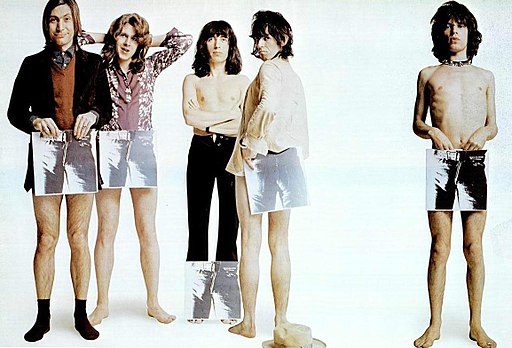
Exile On Main St Dlx, with Milk Thistle
The Rolling Stones last great album, Exile on Main Street, is also mythical. There are all sorts of stories about the album’s debauched creation, and why not? Forced to flee the U.K., their native country, because their former manager Allen Klein while ripping them off, also didn’t pay any taxes, the Rolling Stones ended up in the south of France. Keith Richards rented a mansion in Villefranche called Nellcôte, a house in the grand European style, with porticos, columns, and gardens, and a basement that the Nazi’s used to torture French partisans and others during WW2. Richards had pharmaceutical grade heroin, and who knows what else, and the band, and friends, hung out, and created a sprawling album while having fun. Well, some fun anyway…
Rich Cohen has a new book out called, “The Sun & the Moon & the Rolling Stones”, I suspect I’ll read it eventually. Here’s how he describes the setup at Nellcôte
The Stones, then in the process of signing a distribution deal with Ahmet Ertegun and Atlantic Records, needed to make a follow-up to Sticky Fingers. They’d gone into exile with several cuts in the can, leftovers from previous sessions—some recorded at Olympic, some recorded at Stargroves, Mick’s country house. France was scouted for studios, but in the end, unable to find a place that could accommodate Keith’s junkie needs, they decided to record at Nellcôte. Sidemen, engineers, and producers began turning up in June 1971. Ian Stewart drove the Stones’ mobile unit—a recording studio built in the back of a truck—over from England. Parked in the driveway, it was connected via snaking cables to the cellar, which had been insulated, amped, and otherwise made ready, though it was an awkward space. “[The cellar] had been a torture chamber during World War II,” sound engineer Andy Johns told Goldmine magazine.“I didn’t notice until we’d been there for a while that the floor heating vents in the hallway were shaped like swastikas. Gold swastikas. And I said to Keith, ‘ What the fuck is that?’ ‘Oh, I never told you? This was [Gestapo] headquarters.’”
The cellar was a honeycomb of enclosures. As the sessions progressed, the musicians spread out in search of the best sound. In the end, each was like a monk in a cell, connected by technology. Richards and Wyman were in one room, but Watts was by himself and Taylor was under the stairs. Pianist Nicky Hopkins was at the end of one hall and the brass section was at the end of another. “It was a catacomb,” sax player Bobby Keys told me, “dark and creepy. Me and Jim Price—Jim played trumpet—set up far away from the other guys. We couldn’t see anyone. It was fucked up, man.”
Together and alone—the human condition.
The real work began in July. Historians mark it as July 6, but it was messier than that. There was no clean beginning to Exile, or end. It never stopped and never started, but simply emerged out of the everyday routine. It was punishingly hot in the cellar. The musicians played without shirts or shoes. Among the famous images of the sessions is Bobby Keys in a bathing suit, blasting away on his sax. The names of the songs—“Ventilator Blues,”“Turd on the Run”—were inspired by the conditions, as was the album’s working title: Tropical Disease. The Stones might hone a single song for several nights. Some of the best—“Let It Loose,”“Soul Survivor”—emerged from a free-for-all, a seemingly pointless jam, out of which, after hours of nothing much, a melody would appear, shining and new. On outtakes, you can hear Jagger quieting everyone at the key moment: “All right, all right, here we go.” As in life, the music came faster than the words. Now and then, Jagger stood before a microphone, grunting as the groove took shape—vowel sounds that slowly formed into phrases. On one occasion, they employed a modernist technique, the cutout method used by William S. Burroughs. Richards clipped bits of text from newspapers and dropped them into a hat. Selecting at random, Jagger and Richards assembled the lyric of “Casino Boogie”:
Dietrich movies / close up boogies
The record came into focus the same way: slowly, over weeks, along a path determined by metaphysical forces, chaos, noise, and beauty netted via a never-to-be-repeated process.
(click here to continue reading Secrets of the “Exile” sessions: Drugs, sex and madness as the Rolling Stones took over France – Salon.com.)



